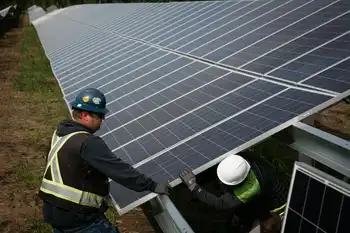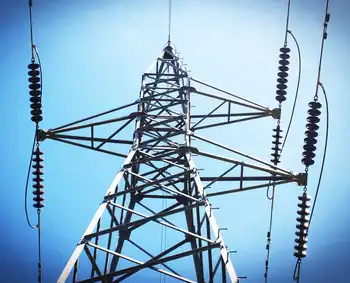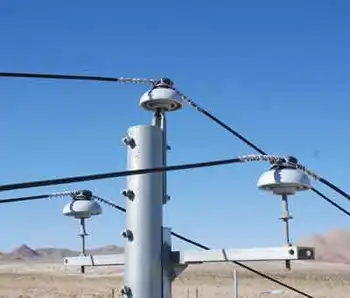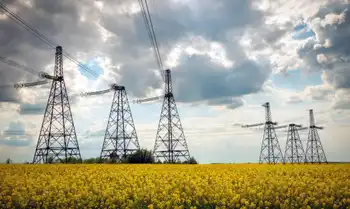Mixed response to JapanÂ’s emissions targets
By New York Times
CSA Z462 Arc Flash Training - Electrical Safety Essentials
Our customized live online or in‑person group training can be delivered to your staff at your location.

- Live Online
- 6 hours Instructor-led
- Group Training Available
Climate-change campaigners have called on Japan to set steep targets to build momentum before global climate talks this year in Copenhagen. A strong commitment by rich countries is seen as crucial to efforts to persuade emerging economic giants like China and India to make emissions reductions.
JapanÂ’s new target, announced by Prime Minister Taro Aso in a televised news conference, would put its 2020 emission levels just 8 percent below its 1990 levels. That is not much more, environmentalists say, than the 6 percent cut by 2012 that Tokyo committed to under the Kyoto Protocol created in 1990. Japan has struggled to meet that target; its greenhouse gas emissions have risen 9 percent from 1990 levels.
Still, Mr. Aso called Japan’s new target “ambitious.”
“We are all responsible for stopping climate change,” Mr. Aso said. “We must ask the Japanese people to make sacrifices. That is the cost of saving our planet.”
Mr. Aso has been keen to assert leadership in climate change ahead of national elections this year.
The European Union has promised to cut emissions to a level 20 percent lower than levels in 1990, and by 30 percent if other wealthy nations follow suit.
In the United States, which did not sign the Kyoto pact, a bill that would reduce emissions by 17 percent by 2020 from 2005 levels recently cleared a Congressional panel. That would be about 6 percent below 1990 levels.
Japan emits less relative to its total output than other major economies. Though Japan has the second largest economy, behind the United States, it ranks fifth in global emissions rankings, trailing the United States, China, Russia and India.
But critics say there is more to be done.
“Japan’s target is not nearly enough to stop the effects of global warming,” said Naoyuki Yamagishi, the head of the climate change program at the environmental advocacy group WWF Japan. “Japan has failed to step up to its international responsibilities,” he said.
Kristian Tangen, a director at Point Carbon, a research and consulting company based in Oslo, said Japan’s goals were “the weakest target any country has pledged so far.”
Japanese businesses argue that their factories are already among the worldÂ’s most energy-efficient and that the country will struggle to cut greenhouse gas emissions further. Since the oil shocks of the 1970s, Japanese companies have pursued technologies that save energy, a drive that has made the country a leader in alternative energy.
Industry leaders also warn that stringent targets for emissions reductions would hurt the frail economy. Japan is in its worst recession since World War II, amid a collapse in global demand for its exports. Last month, industry groups took out a full-page advertisement in the largest daily paper in Japan, warning that steep targets for emissions reductions could hurt economic growth.
“The midterm targets need to be fair to all countries, realistic, and place equal burden on a country’s citizens,” the Keidanren, the largest business lobby in Japan, said in a statement. The lobby had backed a target that would have allowed for a 4 percent increase in emissions from 1990, or a 4 percent decrease compared with 2005.
Mr. Aso was quick to point out that unlike targets set under the Kyoto Protocol, which allowed countries to use emissions offsets and other methods, the 15 percent decrease would come from actual cuts. The government recently introduced subsidies that encourage the use of solar power in Japanese homes, as well as incentives on low-emission cars.
The 15 percent target, he stressed, was a compromise he had reached after consulting extensively with scientists and economists, as well as with members of the public.
To meet the target, Japan will pursue breakthroughs in environmental technology, as well as expand the use of nuclear energy. Mr. Aso has said Tokyo aims to expand solar output by a factor of 20 and put more “green” cars on Japanese roads.
Meanwhile, Mr. Aso said it was imperative for countries that had not signed the Kyoto Protocol, like the United States and China, to join in the next round of talks. The Kyoto pact covered countries responsible for just 29 percent of global emissions, he said.
Tsutomu Toichi, head of the Institute of Energy Economics, an independent research organization, said Japan would struggle to meet its new emissions goals.
“Japan’s target is a compromise, but it’s still a tough one for Japan to meet,” Mr. Toichi said. “Japanese companies are already extremely energy efficient, so there’s much less room for improvement.”











